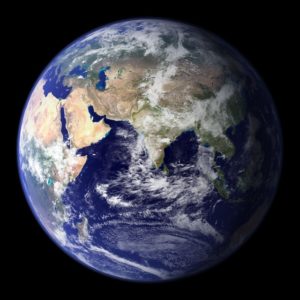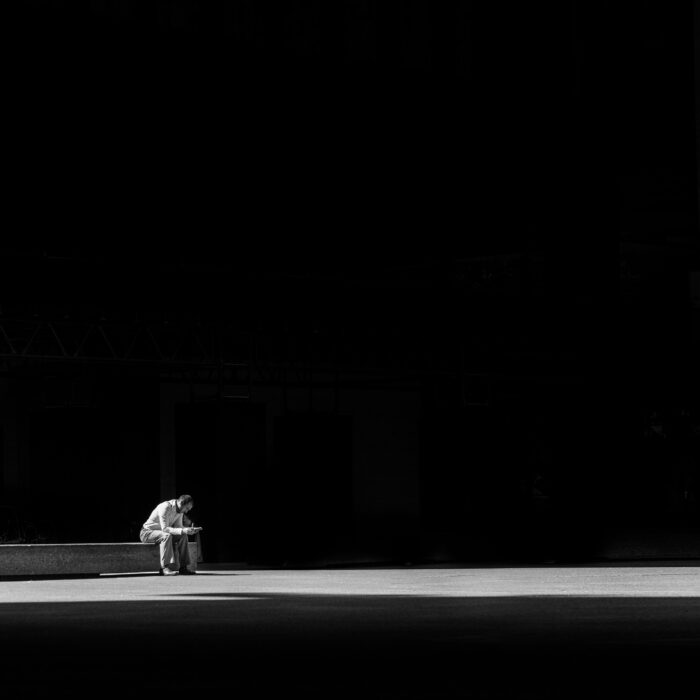You have no items in your cart. Want to get some nice things?
Go shopping What does it mean to linger in the face of extinction? How do we gather that immensity into our short lifespans?
What does it mean to linger in the face of extinction? How do we gather that immensity into our short lifespans?
I asked myself this as I stood among a flock of Northern bald ibis last year. Most of them roosted in cosy pairs as they peered down at me from an artificial rock face in a large aviary of the Jersey Zoo. Not in their hot native habitat of the Middle East, but in the chilly fog of the Channel Islands. Long, scythe-like beaks clicked in my direction, the stranger in the group, while they waited to be fed a smelly sulfur of ground beef, hardboiled eggs and mice. These intimidating birds, much larger than crows and with the leathery heads of vultures, once roamed Europe, the Middle East, and northern Africa in large flocks. The holy bird of Egypt whose name once signified resplendence and glory is now all but absent in the wild.
Environmentalism, extinction, conservation, sustainability, climate – all these catchwords of the modern physical world have come to be inhabited and discussed in a scientific or political way, a latex-glove approach to the real world around us that treats us as somehow separate, apart, detached.
The ibis flock was my first conscious encounter with a species that is close to vanishing from the planet. It could just have been the pungent scent of the ibis feed, but my heart fell in a swoop of poignant sadness at the shadow hovering over these critically endangered birds.
The fate of the Northern bald ibis is shared by an ever-increasing number of creatures and plants. It’s been called ecocide, but a collective approach to the scale of loss is just beginning to emerge. Do we memorialise the loss of an entire species in the way we might the loss, say, of genocide victims? Is that too close to home, or just an exercise in sentimental anthropomorphism? If it’s time to find a means of remembering non-human species lost to the dark tunnel of oblivion, how do we shine a light on what to avoid in the future?
For some time, I’ve followed the work of several artists and activists who are confronting these very questions.
Megan Hollingsworth is the founder and director of Extinction Witness, a creative project focused on a ‘public expression of chronic grief (and) encouraging non-violent conflict resolution’ around the disappearance of species. She is part of a far-flung community that has been looking for a new language of memorialisation, a way to figuratively and literally get our hands dirty in the world again by respecting our dependency on it.
We corresponded and she agreed to answer a few questions in a written interview. I asked how her project initially developed, and she wrote about her time “spent exploring possibilities for establishing a more reverent presence and approach” to the felling of a 1200-year-old giant sequoia in 1853, an incident widely considered to have sparked the first conservation movement and the establishment of national parks in the United States.
You don’t have to be the kind of person who grieves an ancient tree recklessly cut down 160 years ago to be concerned with the current extinction wave. The only thing new about feeling dismay in the face of the destruction of the natural is that now it can be shared and disseminated through global news and social media. Yet for all that connectivity, many people feel alone with their sadness.
The Extinction Witness project explores ways to dignify and respect the final passage of species, to transform anger and depression into action, to highlight the regenerative powers of shared loss. This grieving can help people move from despair to inner calm. It can, however, also promote heightened awareness and activism.
“I do this work because there’s peace of mind for me in it. If the work were to have any meaning for or influence on others, I would like that to be an equivalent passion and peace in their person. I’m honouring death as part of life’s cycle, honouring embodied grief as natural or response to loss, and working that we may collectively live well, ‘even beautifully’ in Barry Lopez’s words, before an ultimate passing.”
Raised a Quaker, Hollingsworth describes her trajectory of experiencing environmental destruction as a physical, emotional, and intellectual journey. The story of human interaction with the environment is, for her, one of destruction and grief. It is a relationship that requires healing. The practice of communal grief in the form of ceremonies and rituals is one aspect of that healing solution. Like most ceremonies, there’s an important element of performance.
“Extinction Witness was seeded in recognition of the naturally complicated and conflicted human emotional and spiritual response to genocide, global warming, and species extinction. Work on the project began at the close of 2011 as I worked on a website to promote a multimedia performance memorial to cetaceans.
“The impulse to promote The Whale Memorial Dance quickly evolved into Extinction Witness as I discovered other memorials to extinct and endangered species along with a flood of dialogue and activity in response to mass species extinction. I was thrilled to discover the broad-ranging solutions, including the grief work, and wanted to celebrate and share the gamut – to amplify and foster the compassionate response that’s generally ignited when humans are informed of the losses.”
The Extinction Witness project includes a web site, the creation of ceremonies and processions, collaborations with filmmakers, and art installations. The most recent is the first of a series of Regenerative Memorials, dedicated on Lost Species Day, November 30, 2017. These small plots in community gardens, public parks or private forest are intended to “encourage public displays of grief while supporting the human grieving process,” to create “areas for quiet reflection and mourning ritual both free of and of any religious doctrine,” and finally, to “provide edibles free for harvest without monetary exchange.”
The logo on the Extinction Witness site is a graceful infinity sign with a hummingbird in flight forming one end, as if the bird itself had drawn the sign and was an integral part of it. A part of creating a new language of interaction is a move towards visuals, the kind of communication that transcends the rational.
The creative use of visual language is echoed in the approach of the Extinction Symbol (1). Looking like a Roman X within a circle, the Symbol is a public domain image intended to be used by anyone wanting to spread the message of urgency when it comes to extinction. I approached the person behind the Extinction Symbol project, who identifies only as Goldfrog ESP, and asked about the project and its goals. In a written interview, Goldfrog explained, “The goal is that it’s everywhere, so that people see it as they move around the city. A visual reminder of a largely hidden crisis and a confrontation/admonishment to those who indulge in the hyper-consumerist lifestyle.”
The inherent limits and dangers posed by consumer capitalist societies for the natural world is a perspective shared by many environmentalists, but it is a particular focal point for those raising awareness of extinction.
With a large following on Twitter and a minimalistic web page, the Symbol has established itself as source of ecological information and an artistic inspiration. Since its creation in 2011, people around the world have gotten the Extinction Symbol tattooed, drawn it in sand, created it out of stones and flowers, and then shared it to the Extinction Symbol feed. Artists Julian Oliver and Crystelle Vü created a gong featuring the symbol that’s been installed at the Museum of Natural History in Hamburg, Germany. The gong is sounded whenever the museum is notified that another species has gone extinct.
The Symbol’s creator says that the symbol “transcends language.” It is intended to make “the (extinction) issue impossible to ignore and hopefully provoke a cultural shift away from the current destructive paradigm.” In that sense, it is intended to carry a message as instantly recognisable as that of the peace symbol, designed in 1958 by Gerald Holtom for the nuclear disarmament movement.
Like the peace symbol, the Extinction Symbol is a visual articulation of a process, a way of figuring out how to encompass a complex concept in a single ideogram.
“I felt a symbol was needed to convey a sense of planetary emergency. As a way of representing the issue that can be quickly replicated by anyone. Also quickly recognised when seeing it in passing in an urban environment, for example.”
Did I say the Symbol looks like a Roman X within a circle? It does, but it can be read other ways, as well. It’s another infinity symbol, this time pointed at the bell ends and set upright like a sandless hourglass. It has a dire X at its centre, a well-suited visual alliterative for the topic of extinction. It’s reminiscent of a ‘go-no-further’ image, an X confined in a circle. And, like the original symbolism behind the peace symbol, the circle can be taken as a sign of rebirth as well as totality.
“The Symbol is also for signalling the existence of a widepread resistance movement.”
Resistance to environmental degradation and extinction takes many forms. Some are scientific: The Jersey flock of a few dozen ibis is a part of a captive population spread around the world in a modern Noah’s ark, a network of conservation zoos. If and when an end is made to the habitat loss, hunting, and pesticides that have reduced the Northern bald ibis to a short few hundred in the wild, the genetic diversity found in zoos might be the only hope for keeping this ancient species extant.
But some resistance needs more than practicality and commitment. It needs heart; it needs the profound recognition of what is being lost in order to save what is still present.
Here’s what I thought as I stood in the aviary at the Jersey Zoo, surrounded by glossy black birds that swooped down to the food trays after deciding to ignore me: It’s easy to be affected by these animals and their situation while standing in their midst.
What about the absences I’m not seeing? How many people in the war-torn spaces across which the ibis once migrated in massive flocks still look up to the sky and wonder where all the sacred, resplendent birds have gone? We humans forget, and forget, and forget again, because forgetting is more comfortable than grieving and changing. We have maxims that enshrine forgetting as a way to get through pain. “Time heals all wounds,” or “Give it time.”
Now we are in a situation where time is of the essence.
I look at the work of Meg Hollingsworth and see the possibility of regeneration among the impending ruins. I look at the Extinction Symbol and read it a different way again: as a lantern, shining a light to what we’ve done, and what we might do.
(1.) Link here to: Extinction Symbol

About P. K. Read
A Californian-born resident of France, P.K.Read's fiction and non-fiction has been published in Necessary Fiction, Bartleby Snopes, the 2015 Bristol Short Story Anthology, Jersey Devil Press, Rind Literary Magazine, The Feminist Wire and elsewhere. She writes for Huffington Post and Midcentury Modern (Medium).




We do indeed forget, and that’s to our detriment. People know about the passenger pigeon and the dodo, but not the 900 other species that have gone extinct in the past few hundred years. This is something I wanted to address in my book, “Brief Eulogies for Lost Animals: An Extinction Reader.” They deserve to be remembered and memorialized. Perhaps by memorializing what we have lost we can protect what we still have. More information can be found here: https://danielhudon.com/now-available-brief-eulogies-lost-animals/
Daniel, thanks very much for your comment and also, thank you for your lovely Brief Eulogies, which is a must-read.